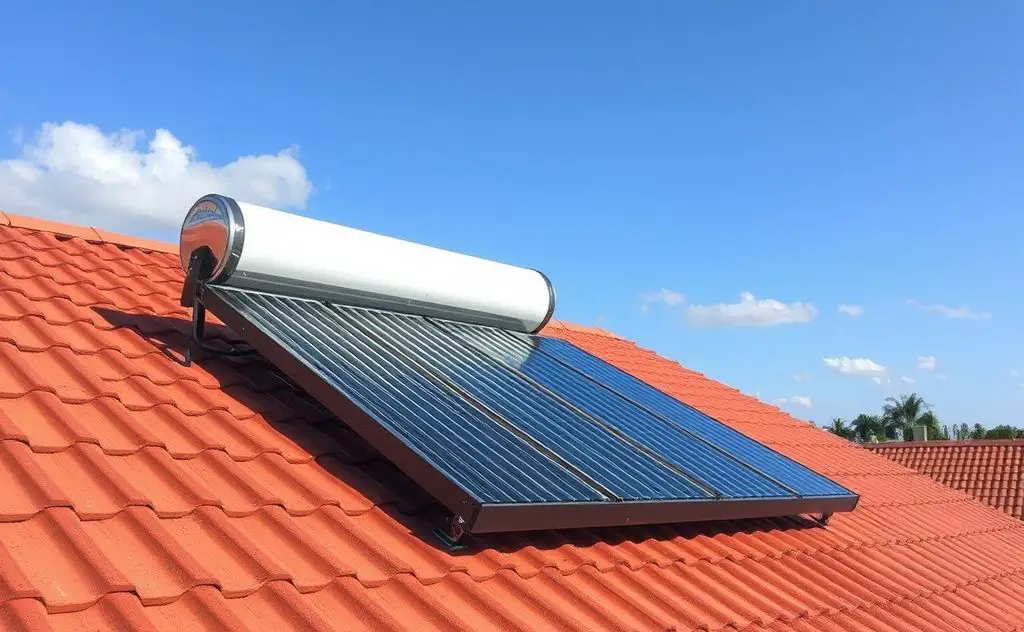A mounted solar hot air heater efficiently captures sunlight to generate warm air for heating spaces, reducing energy costs and promoting sustainability.
Mounted solar hot air heaters harness sunlight to provide clean, cost-effective warmth for homes and buildings. These innovative systems offer an alternative to traditional heating methods while reducing energy bills and carbon footprints.

How Mounted Solar Hot Air Heaters Work
Solar hot air heaters use simple technology to convert sunlight into usable heat:
- Sunlight passes through a transparent cover into an insulated collector box
- A dark-colored absorber plate inside converts light to heat
- Air circulates through the heated space, either naturally or with a fan
- Warmed air enters the living space while cooler air returns to the collector
Key Components
Quality solar air heaters include:
| Component | Function |
|---|---|
| Absorber Plate | Converts sunlight to heat (often aluminum with selective coating) |
| Glazing | Transparent cover (usually tempered glass or polycarbonate) |
| Insulation | Prevents heat loss from back and sides |
| Air Channels | Directs airflow for maximum heat transfer |

Benefits of Solar Air Heating
These systems offer significant advantages over conventional heating:
Energy Savings
Solar air heaters can reduce heating costs by 30-50% according to U.S. Department of Energy studies. The Arctica Solar 1500 series delivers 1,500W (5,000 BTU/hr) of free heat when sunlight is available.
Environmental Impact
By displacing fossil fuel use, each solar air heater prevents about 1 ton of CO2 emissions annually. The best built-in gas heater can’t match this eco-performance.
Improved Air Quality
Unlike combustion systems, solar heaters provide fresh, filtered air without emissions. The IV50 Intelligent Ventilator includes humidity control for optimal indoor air quality.
Installation Considerations
Proper installation maximizes performance and longevity:
Mounting Options
- Wall-mounted: Most common, especially in snowy climates
- Roof-mounted: Requires proper flashing and shorter duct runs
- Ground-mounted: Alternative when building surfaces aren’t suitable
Orientation
Portrait orientation (vertical) takes advantage of natural convection, though landscape mounting is possible with custom duct placement. South-facing placement (in northern hemisphere) optimizes solar gain.
Ducting
Limit duct runs to 6 feet when possible to minimize heat loss. Insulate all ducts in unconditioned spaces. The best water heater thermostat control principles apply to solar air systems too.
Comparing Solar Air Heater Models
Popular options include:
Arctica Solar 1500 Series
- 1,500W (5,000 BTU/hr) capacity
- Includes 10W PV panel for fan power
- Ready-to-mount design
- Ideal for spaces up to 200 sq ft
Arctica Solar 750 Series
- 750W (2,500 BTU/hr) capacity
- Compact size for smaller areas
- Same quality construction as 1500 series
Maintenance and Operation
Solar air heaters require minimal maintenance:
- Clean glazing surface annually
- Check duct connections for air leaks
- Verify fan operation (if equipped)
- Inspect mounting hardware periodically
Unlike the best Samsung dryer heater, solar systems have no moving parts except the fan, ensuring long service life.
Real-World Performance
In Antarctica, Arctica Solar heaters have operated successfully since 2016, demonstrating their durability in extreme conditions. Homeowners report:
- Noticeable reduction in conventional heating use
- More consistent temperatures without cold spots
- Improved comfort from fresh air circulation
Supplemental Heating Strategies
For 24/7 heating needs, pair solar with:
- Wood stoves (excellent thermal mass)
- High-efficiency gas heaters
- Heat pumps for all-climate performance
The thermostat-controlled operation ensures solar heat only activates when beneficial.
